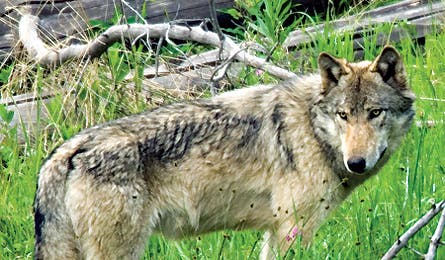Predator-Prey Relationships

'(Photo by Willard Clay)'

(Photo by Willard Clay)

(Photo by Ken Archer)

(Photo by Ken Archer)
Who saw more elk at Yellowstone’s Mammoth Hot Springs: (a) nineteenth-century explorers, or (b) last summer’s motoring tourists? Believe it or not, it’s the windshield crowd. Hundreds of years ago, a healthy number of bears and wolves kept the elk population in check. Natural dynamics between predator and prey keep both species in balance, which helps ensure biological diversity across the ecosystem. Here’s how it works–and what happens when it doesn’t.
Natural Forces
At Michigan’s Isle Royale National Park, wolf and moose populations rise and fall in connected cycles. “When wolf populations are high, they eat a lot of young moose,” explains Rolf Peterson, a Michigan Tech University biologist who’s been studying predator-prey dynamics on Isle Royale for decades. “But 10 years later, there aren’t as many old moose.” Wolf numbers then nose-dive, and moose thrive again. This in turn affects the island’s vegetation: Balsam firs decline when abundant moose eat young trees before they can reproduce, then rebound when lean moose populations allow them to reach maturity.
Effect
Natural negative feedback cycles mean more robust populations of both species. At pristine and remote Isle Royale (where light visitor traffic results in a fairly intact ecosystem), “We’re seeing that the wolves tend to remove the weakest moose, leaving the bigger, healthier animals to breed,” explains Peterson.
Human Influence
Given plenty of food and scarce predators, any population will grow exponentially. With no wolves left in Colorado’s Rocky Mountain National Park, the elk population has swelled to almost double its natural size. At Yellowstone, Yosemite, and Zion, research has linked high numbers of deer and elk to areas with lots of human activity, where wolves and grizzlies just won’t go. The result? Skyrocketing populations. “We end up with ‘urban ungulate syndrome,'” says Bill Ripple, an Oregon State University ecologist. “It’s as though they are using humans as shields to avoid predators, and they increase in numbers in the process.”
Effect
Mule deer have over-browsed Zion Canyon’s cottonwoods, leading to streambank erosion, reducing vegetation, and making the area less habitable for lizards, amphibians, and butterflies. The elk at Rocky Mountain have also damaged aspen and riparian willow communities–prompting park officials to create a plan to cull the population in 2009.
